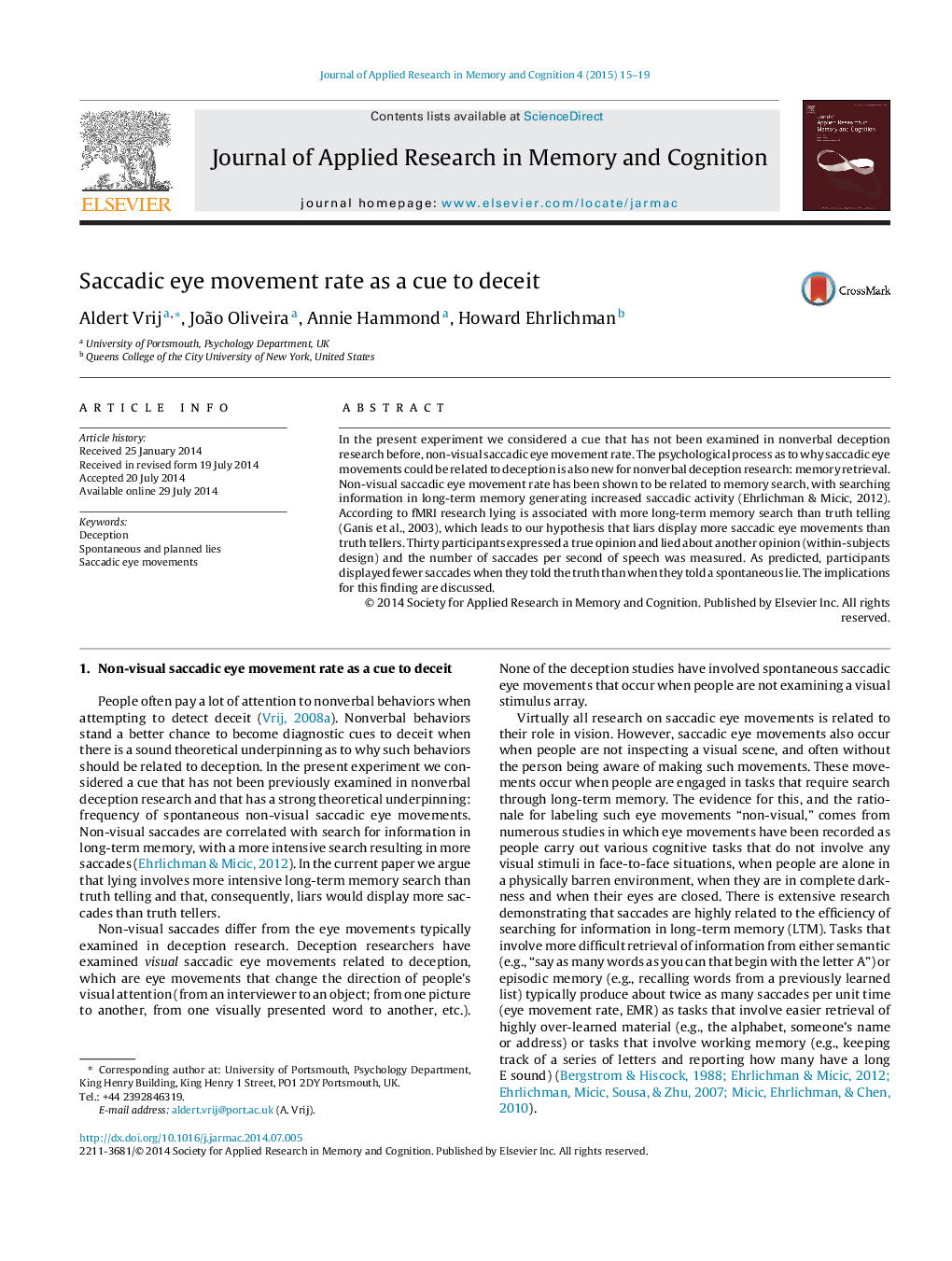| کد مقاله | کد نشریه | سال انتشار | مقاله انگلیسی | نسخه تمام متن |
|---|---|---|---|---|
| 881596 | 911879 | 2015 | 5 صفحه PDF | دانلود رایگان |
• Searching information in long-term memory leads to increased non-visual saccadic eye movement activity.
• According to fMRI research lying is associated with more long-term memory search than truth telling.
• Participants displayed fewer saccades when they told the truth than when they told a spontaneous lie.
In the present experiment we considered a cue that has not been examined in nonverbal deception research before, non-visual saccadic eye movement rate. The psychological process as to why saccadic eye movements could be related to deception is also new for nonverbal deception research: memory retrieval. Non-visual saccadic eye movement rate has been shown to be related to memory search, with searching information in long-term memory generating increased saccadic activity (Ehrlichman & Micic, 2012). According to fMRI research lying is associated with more long-term memory search than truth telling (Ganis et al., 2003), which leads to our hypothesis that liars display more saccadic eye movements than truth tellers. Thirty participants expressed a true opinion and lied about another opinion (within-subjects design) and the number of saccades per second of speech was measured. As predicted, participants displayed fewer saccades when they told the truth than when they told a spontaneous lie. The implications for this finding are discussed.
Journal: Journal of Applied Research in Memory and Cognition - Volume 4, Issue 1, March 2015, Pages 15–19
